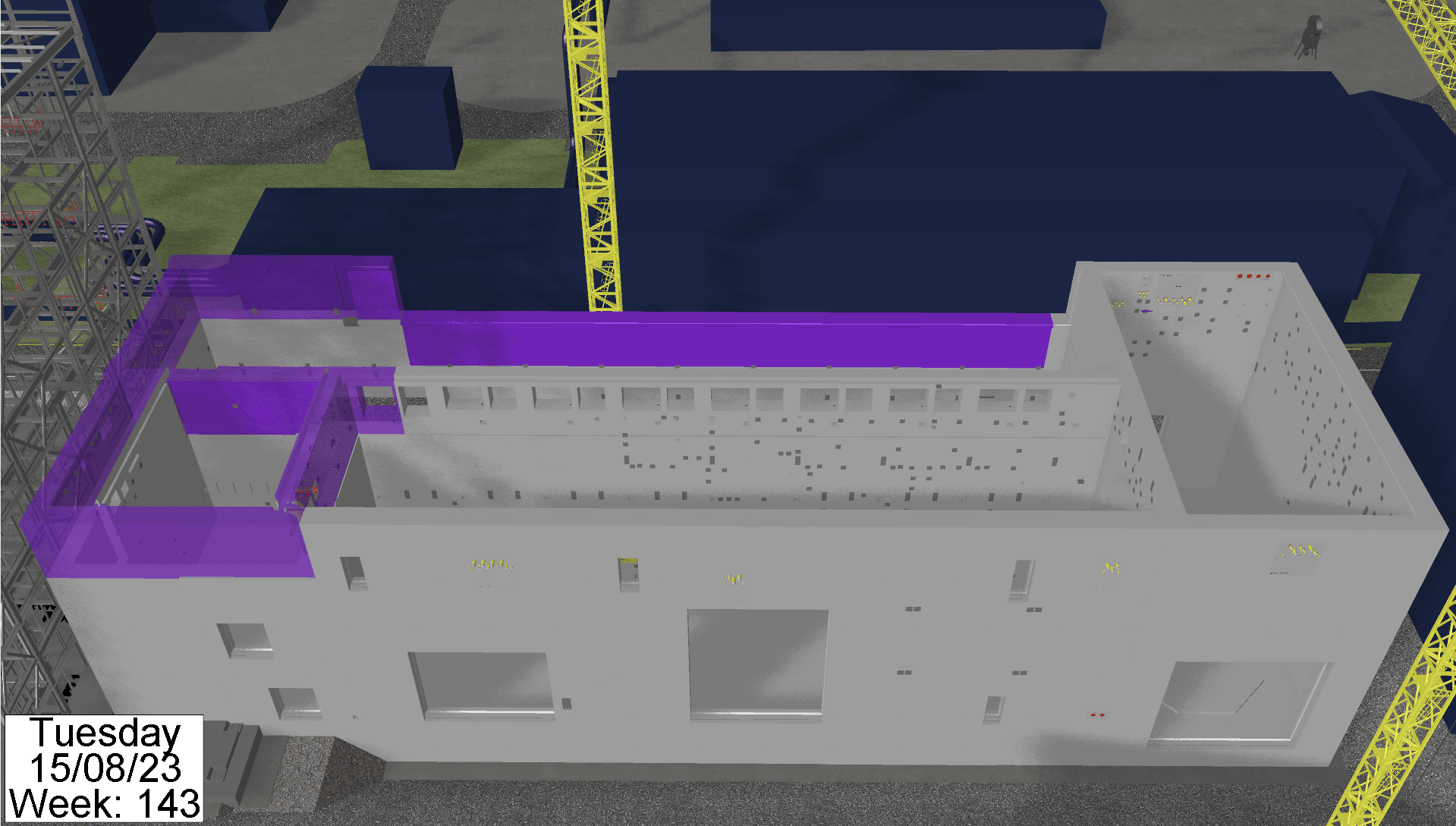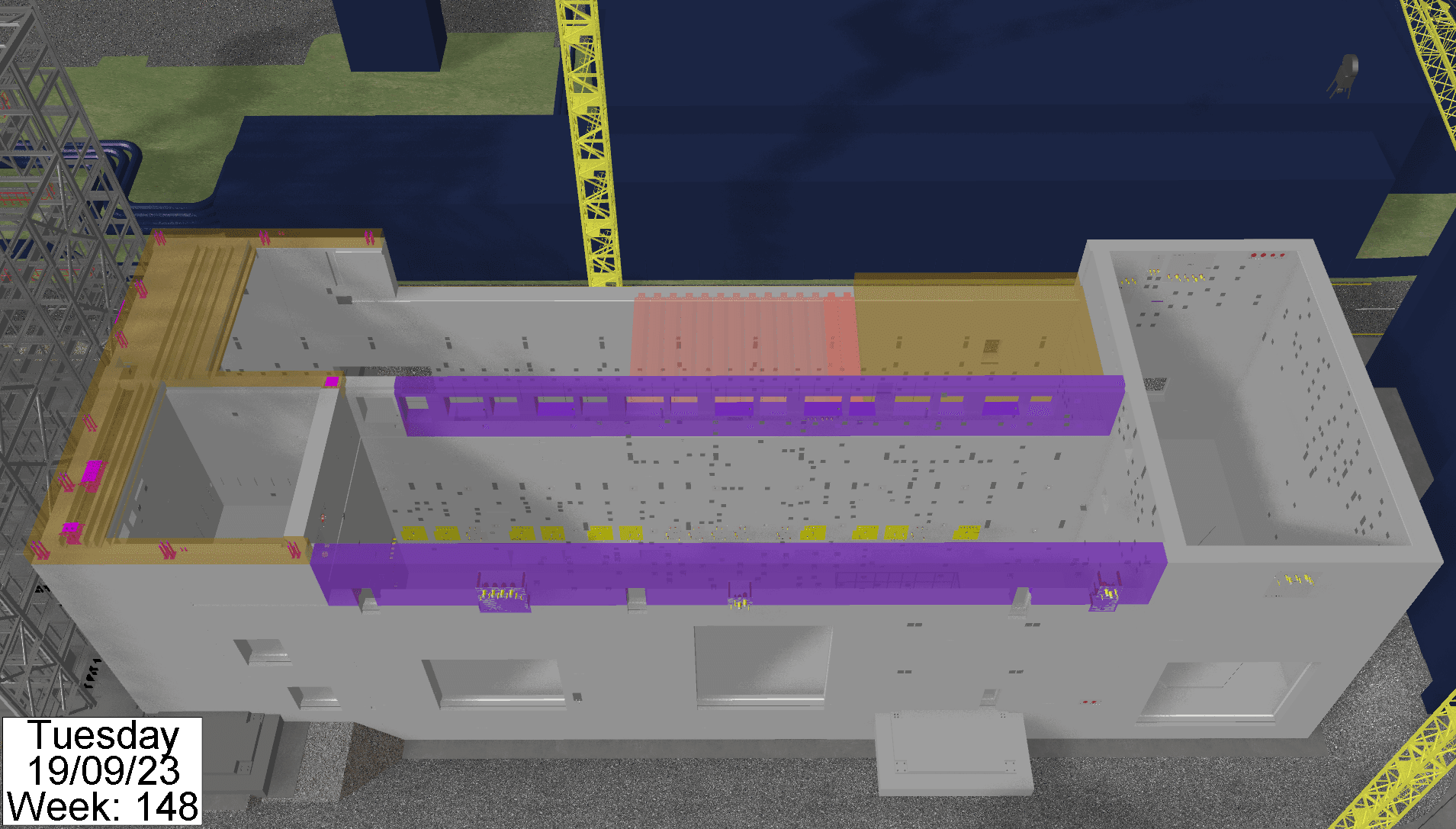
SIXEP Community Plant
Careys is close to completing the first phase of its contract for the construction of a crucial continuity waste treatment facility, serving Europe’s largest and most diverse nuclear energy site, based in Cumbria. Here we investigate the scale and complexities to some of its key elements.
Client
Sellafield LimitedLocation
Cumbria, SellafieldPrincipal Contractor
Altrad BabcockServices
Careys' Five Year Sellafield Contract Set to Deliver New SIXEP Facility
While the Government weighs its options on the supply of new generation, ‘small modular’ nuclear reactors, similar to those which power the Royal Navy’s larger submarines, the work to maintain the country’s existing and decommissioned reactors, along with all of the waste materials they generate continues unabated, with Careys playing a major role in delivering a new ‘Site Ion Effluent Exchange Plant’ – known as SIXEP - which will treat radioactive effluent from existing treatment streams throughout Sellafield.
The site at Sellafield in Cumbria was where the original Calder Hall power station became the location for the prototype 50 MW Magnox reactor in 1956. Three more Magnox reactors were commissioned there before the end of the decade, providing power to the National Grid for nearly half a century, while the original SIXEP was constructed in 1985 to effectively function as the site’s kidneys; cleansing the discharge before being released through the main outfall pipes.
According to a Government website: “SIXEP is one of our key effluent treatment plants because of the role it plays in treating effluents from high hazard and risk reduction programmes from the First-Generation Magnox Storage Pond and the Magnox Swarf Storage Silo. Originally designed for a 25-year working life, equivalent SIXEP treatment will continue to be needed until at least 2060 to deal with effluent from the later Advanced Gas[1]cooled Reactor programme and other high hazard sources.”
CGI of New and Existing SIXEP Facility
The new facility comprises two main parts: the Services Building and adjoining Process Building, where the waste is treated within a series of sealed chambers - known as ‘Dark Cells’ - before being safely discharged into the Irish Sea; and it is intended for the old and the new plants to operate in tandem during a lengthy transition period.
As well as the urgent requirement to replace the eighties facility, achieving key deadlines on the new SIXEP was crucial in order to help control costs and to ensure a timely, clear-space handover to the project’s process construction partner, Altrad Babcock. Careys was therefore awarded its contract to construct the process and service buildings on the basis of its proven track record of delivering major civils and infrastructure projects; as well as having the capacity and established supply chain to meet the project’s diverse demands.
Paramount amongst these, is the need to achieve millimetre accuracy in the context of heavy construction work, particularly with respect to positioning en-cast items to accommodate the myriad of service installations; most of which will be inaccessible throughout the entire working life of SIXEP.
Accuracy by design
The Senior Planning Engineer for Careys, Rory Atkinson, commented: ISO 19650 ethos has been fully adopted for the construction of SIXEP, therefore building off the back of the designers’ detailed 3D models we developed an in-house ‘digital twin’ model, which represents our construction strategy. Utilising Revit and Navis Works we were able to break down the original model into specific concrete pour referencing. The model was updated throughout the build sequence, offering clarity as change occurred and creating an as-built record of the concrete structure to date.


Snapshots from Careys 3D Concrete Pour Reference Document
Then along with its collaborative, management and analytical capabilities, the 4D imagery our SYNCRO software provides were particularly important in communicating the objectives to everyone in our teams, including the ‘boots on the ground’: the excellent visibility enabling everyone to become conversant with the methodology for individual work packs. Also, the fact that we train our black hats (Supervisors) to have the skillset to get the best from the operatives they look after is one of the things which sets Careys aside from a lot of the competition.


4D Imagery Utilising Synchro 4D for Visualising Programme Position


4D Imagery of Platform Lifting Sequence
Careys’ involvement in the planning process actually started back at the tender stage, through the company’s early engagement when awarded a large part of the enabling work; allowing its team to bring on board the contract programme and familiarise itself with the working conditions and the restrictions unique to one of the world’s most active nuclear sites. Importantly, through having full involvement with the evolution of the method statement and risk assessments, Careys was able to bring its wide experience to bear, leading to significant savings on the critical path for the project. In particular, time savings were found in relation to the delivery and installation of encast units and the location of the roof structure’s precast elements which supported significant amounts of these.
Paul Russell, Project Manager & Mark Nicholson, Quality Engineer for Careys recounted: In terms of the concrete mix design, there were two subtly different specifications to comply with, and multiple performance parameters to be taken into account. These included the soil conditions encountered at Sellafield, the size and density of the reinforcement steel, and the need to minimise shrinkage cracks which are obviously undesirable in nuclear works, where utilising 10mm rather than 20 mm aggregate in large pours can create this problem.
BS 8500-1 allows the incorporation of PFA and GGBS (ground granulated blast furnace slag) as part of the cement content, and while minimum 60% replacement was required for the water retaining structures like the coffer dam and raft foundation, we opted for 70% to control heat of hydration associated with structure. We therefore had to seek client approval to use a combination of very high flowing mixes to ensure compaction and full density was achieved while mitigating drying shrinkage.
Throughout the project, Careys worked with regular supply chain partner, Doka, with one of the formwork specialist’s own engineers dedicated to collaborating with the site team to ensure its Framax & Top 100 shutters were precisely adapted to the requirements for each pour. This close cooperation being invaluable in sequencing and adapting the jump-style forms as the work progressed.


Images of Process & Service Building Raft Foundation Construction
As a result of the meticulous planning, the construction of the foundation for the Process and Services Building was completed ahead of schedule in February 2022. The Process building was founded a raft foundation cast in four pours which ranged in volume from 500-600 m3; then the Service Building featured a trio of raft foundations, varying in volume from 300-500m3 – with the first in line containing the main service trench. The individual pours were subtended by Reocostal stop ends, and waterproofed using hydrophylic, swellable water bar materials.
Focus then moved to the wall structures where, in the case of the centre wall, congestion of rebar was added to by the lines of en-cast frames, whose alignment required minute adjustment using EDM. Rory Atkinson alluded: “Using our digital twin model, we were able to visualize all elements of the build from the en-casts in the wall to the reinforcement. Being able to see this was invaluable. Everyone working on the project could pre-plan the works and detect any clashes ahead of the works being undertaken: allowing our engineers to use the imagery in technical questions to designers in a timely manner.”
Top floor slab construction & 3D visual aids
There were logistically even more complex challenges to follow up at the top floor slab level, where Careys was responsible for the procurement and design of the multi[1]bay precast concrete top floor structure, involving ABM Precast as its trusted supplier.
The process by which the integrated roof structure was delivered required rigorous scheduling on the part of the project team, coordinating a number of work streams. Not only were there two dozen variants of precast beams to be craned into position in sequence atop the walls, but they were followed by installing a series of encast mechanical equipment.
High tensile steel web bars were threaded through the precast beams to form the bottom mat, before the already restricted spaces were then infilled by prefabricated reinforcement cages and multiple preassembled shutters, brought across from Careys’ yards elsewhere on the Sellafield site.
With the main beam cages in position, the top mat was assembled, and each bay meticulously checked and cleaned ahead of concrete being placed. The minutely planned methodology then saw the roof slab cast in three separate pours with the larger 420m3 pour being successfully completed ahead of schedule just before the 2023 Christmas holiday.
Imminent Handover
Careys engineers are currently involved in a forensic examination of the structure they have shaped over the past three years : employing 3D point cloud analysis to confirm that the multiplicity of en-cast frames, plates and other service voids are all within design tolerances.
Along with heat maps, these readings will be key amongst the reports and as-built data which constitute a cold handshake confirming that SIXEP’s labyrinthine structure is fully ready for the M&E contractors to takeover. Much further down the line, when all of the process plant is in place and tested, Careys team will return to help permanently seal off the Dark Cells.
We'd love to hear from you, so please get in touch